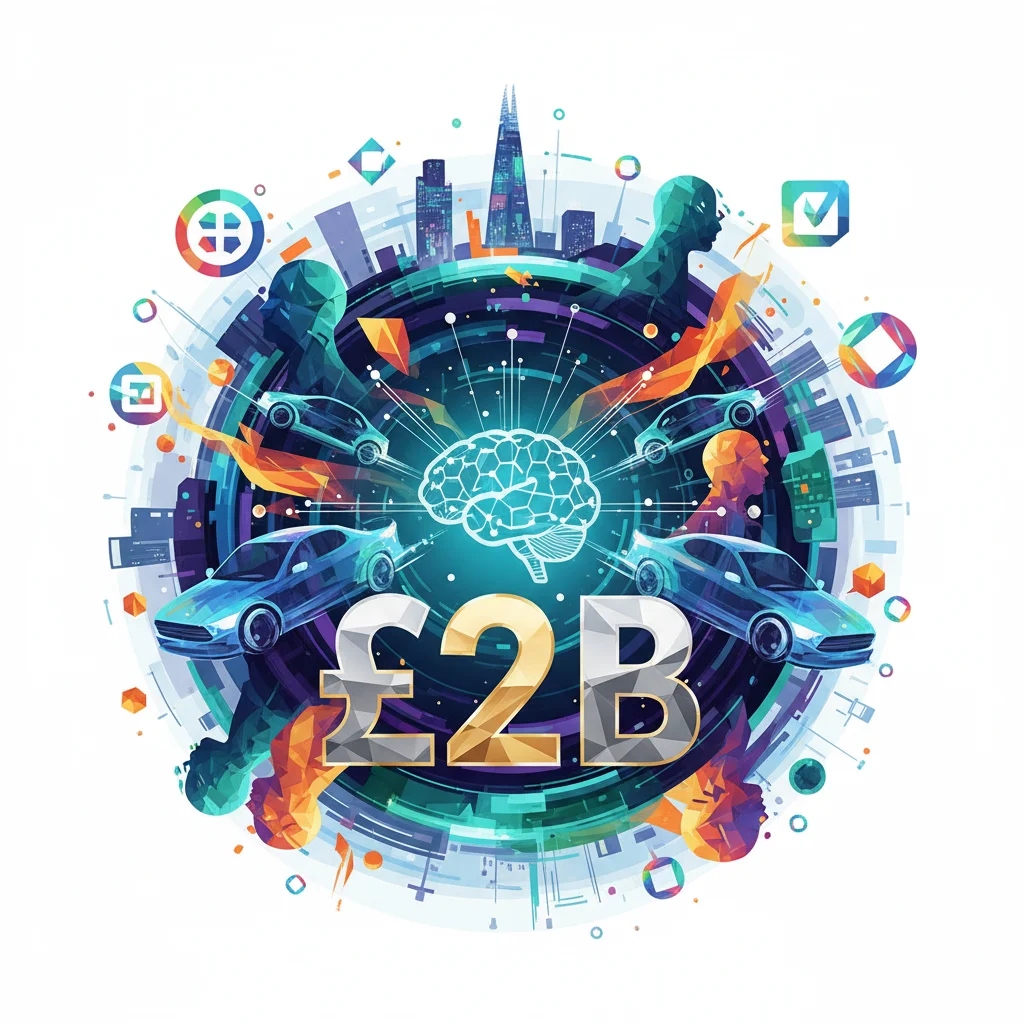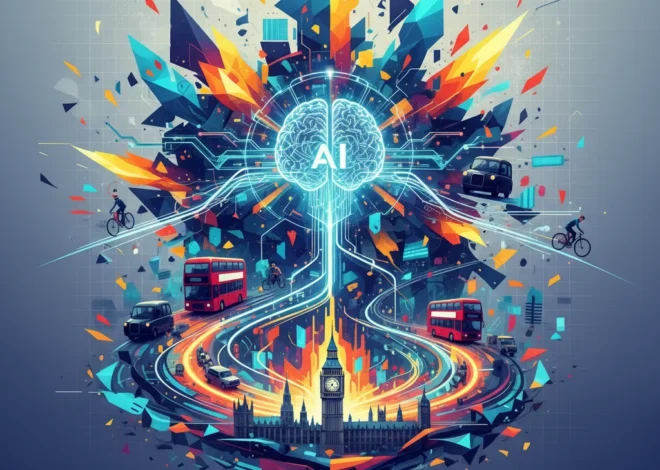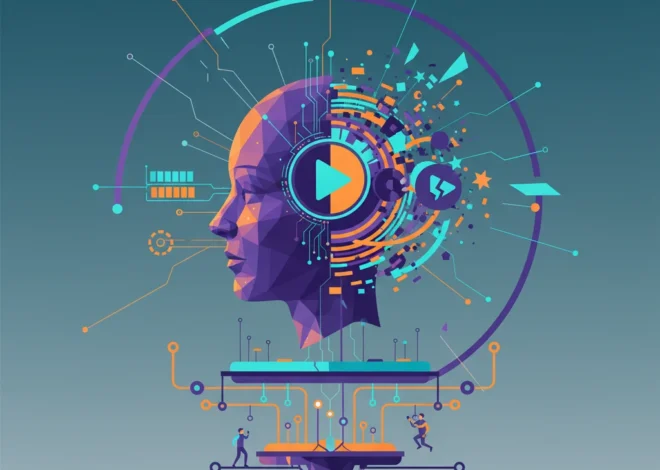
Wayve’s $2 Billion Gambit: How a UK Startup is Teaching Cars to Drive Like Humans and Courting Tech Giants
In the high-stakes world of artificial intelligence, every so often a funding rumor emerges that sends shockwaves through the industry. This time, the epicenter is London, where autonomous vehicle startup Wayve is reportedly in talks for a colossal funding round that could reshape the race for self-driving cars. According to a report by the Financial Times, the British AI pioneer is negotiating with giants like SoftBank and Microsoft for a fundraise that could exceed $2 billion, potentially rocketing its valuation to a staggering $8 billion.
But this isn’t just another story about a startup raising a mountain of cash. This is a story about a fundamental shift in philosophy. While many competitors have spent billions building intricate, rule-based systems and hyper-detailed digital maps of our cities, Wayve is betting on a different, more elegant, and radically ambitious approach: teaching cars to drive the same way humans do—by watching, learning, and generalizing.
This potential investment isn’t merely a vote of confidence in a single company; it’s a massive wager on a new paradigm for “embodied AI”—intelligent systems that can learn and operate in the complex, unpredictable physical world. Let’s buckle up and explore what makes Wayve’s approach so revolutionary, why tech titans are lining up to invest, and what this means for the future of automation and artificial intelligence.
The Deal: Deconstructing the $2 Billion Ambition
First, let’s talk numbers, because they are truly significant. A fundraise north of $2 billion is a figure typically reserved for the most established tech behemoths or the hottest generative AI companies of the moment. For a UK-based startup specializing in the capital-intensive field of autonomous vehicles, it’s a game-changer. The rumored $8 billion valuation (source) would place Wayve firmly in the top echelon of global AI startups and mark one of the largest-ever funding rounds for a European AI company.
The names around the negotiating table are just as telling. SoftBank, through its Vision Fund, is known for making massive, paradigm-shifting bets on technology leaders. Their potential involvement signals a belief that Wayve’s technology isn’t just an incremental improvement but a potential leapfrog over the competition. Microsoft‘s interest is equally strategic. The Redmond-based giant is on a mission to become the underlying platform for the entire AI revolution, providing the essential cloud computing power (through Azure) needed to train these gargantuan machine learning models. An investment in Wayve would not only give them a stake in the future of mobility but would also deeply integrate their SaaS and cloud infrastructure into a critical, data-hungry industry.
This move highlights a broader trend: the convergence of capital and computation. The next wave of innovation in AI requires two things in abundance: immense datasets and immense computing power. This funding wouldn’t just be for hiring engineers; it would be a war chest to secure the GPU clusters and cloud resources necessary to build and train a true AI driver.
A New Philosophy: End-to-End Learning vs. The Old Guard
So, what exactly is Wayve doing that has captured the attention of the world’s biggest investors? The magic lies in their “end-to-end deep learning” approach. To understand why this is so revolutionary, we need to look at how most self-driving cars have been developed until now.
The traditional method, pioneered by companies like Waymo, is a modular, rule-based system. It works like this:
- Sensing: Lasers (LiDAR), cameras, and radar gather data about the world.
- Perception: A system identifies objects—this is a car, that’s a pedestrian, this is a stop sign.
- Planning: Based on a pre-built, high-definition (HD) map and a complex set of hand-coded rules (“if a pedestrian is at a crosswalk, then stop”), the car plots a path.
- Control: The system sends commands to the steering, accelerator, and brakes.
This approach is powerful but brittle. It requires painstakingly creating and maintaining HD maps for every single street the car will ever drive on, a monumentally expensive and unscalable task. It also struggles with “edge cases”—novel situations not covered by its millions of lines of code.
Wayve throws that rulebook out the window. Their system is a single, end-to-end AI model. It takes in raw sensor data (like video from cameras) and, much like the human brain, directly outputs driving commands. It learns not from a set of rules, but by observing vast quantities of human driving data. It learns the nuances of yielding at a busy intersection, navigating a chaotic roundabout, or reacting to an unpredictable cyclist by generalizing from millions of examples, not by consulting a pre-written instruction manual.
This table breaks down the fundamental differences in these two approaches to building autonomous systems:
| Feature | Traditional AV Approach (e.g., Waymo, Cruise) | Wayve’s End-to-End AI Approach |
|---|---|---|
| Core Principle | Modular: Separate, hand-engineered systems for perception, planning, etc. | Holistic: A single AI model maps sensor input directly to driving actions. |
| Data Reliance | Heavily dependent on pre-built, high-definition (HD) maps. | Learns from vast amounts of real-world driving data (video, radar, etc.). |
| Scalability | Difficult & expensive. Requires re-mapping every new city or road change. | Highly scalable. The model can generalize to new, unseen environments. |
| Handling Novelty | Relies on hand-coded rules for unexpected “edge cases,” which can be brittle. | Aims to learn human-like intuition and reasoning to handle novel situations. |
| Analogy | Following a hyper-detailed GPS with a massive, pre-written rulebook. | Learning to drive by watching millions of hours of expert driving footage. |
This AI-first approach is what makes Wayve part of the new wave of “embodied AI,” a field that has been supercharged by the same breakthroughs that power generative AI models like ChatGPT. It’s about creating software that doesn’t just process information but can perceive, reason, and act in the physical world.
The Bigger Picture: A New Ecosystem for AI Innovation
Wayve’s potential success is about more than just self-driving cars. It’s a testament to a flourishing tech ecosystem and a new way of building complex systems.
The UK as an AI Superpower
For years, Silicon Valley has dominated the AI landscape. A deal of this magnitude would be a landmark moment for the UK’s tech scene, cementing its status as a global hub for artificial intelligence research and commercialization. It validates the strength of its academic institutions (Wayve’s founders hail from the University of Cambridge) and its growing community of startups and investors. This isn’t just a win for Wayve; it’s a signal to entrepreneurs and developers worldwide that world-changing AI companies can be built outside of California.
The Platform Shift: Cloud and AI’s Symbiotic Relationship
Microsoft’s involvement underscores a critical truth of modern AI: it’s built on the cloud. Training a model like Wayve’s requires a mind-boggling amount of data and computational power—a service that companies like Microsoft (Azure), Amazon (AWS), and Google (GCP) are perfectly positioned to provide. We are seeing the emergence of a powerful symbiotic relationship where AI startups drive demand for cloud infrastructure, and cloud providers, in turn, invest in these startups to fuel the next wave of innovation. This tight coupling of software, hardware, and AI models is defining the tech landscape of the 2020s.
The Roadblocks Ahead: Navigating a Complex Future
Despite the excitement, the road ahead for Wayve and the entire autonomous vehicle industry is filled with challenges. The final 1% of the problem is famously the hardest part.
- The Unpredictable World: The real world is messy. From rogue plastic bags that look like obstacles to complex, unwritten social rules at a four-way stop, an AI driver must handle an infinite variety of “edge cases.” Proving that a learning-based system is robust enough to handle this long tail of chaotic events is the ultimate test.
- Regulation and Trust: How do we, as a society, decide when an AI is safe enough to drive? The regulatory frameworks are still being written. Public trust must be earned, and a single high-profile accident could set the industry back years. This will require a new kind of collaboration between programming experts, ethicists, and policymakers.
- Cybersecurity Threats: As vehicles become more connected and reliant on complex software, they become targets. Securing an AI driving system from adversarial attacks—malicious inputs designed to fool the model—is a paramount cybersecurity challenge that must be solved before mass deployment.
Conclusion: Driving into the Next Frontier of AI
The news of Wayve’s potential $2 billion funding round is far more than a financial headline. It’s a powerful indicator of a seismic shift in how we approach automation and artificial intelligence. It’s a bet that the future belongs not to rigid, rule-based systems, but to generalist, learning-based AI that can adapt to the complexities of the real world.
Wayve is attempting to solve one of the hardest engineering problems of our time by embracing a philosophy of learning over programming. Whether they ultimately succeed in putting their AI driver in millions of cars remains to be seen. But their journey, supercharged by a potential tidal wave of capital from tech’s biggest players, is pushing the boundaries of what’s possible. This is a story about the future of mobility, the future of software, and the next, most exciting chapter in our relationship with intelligent machines.


